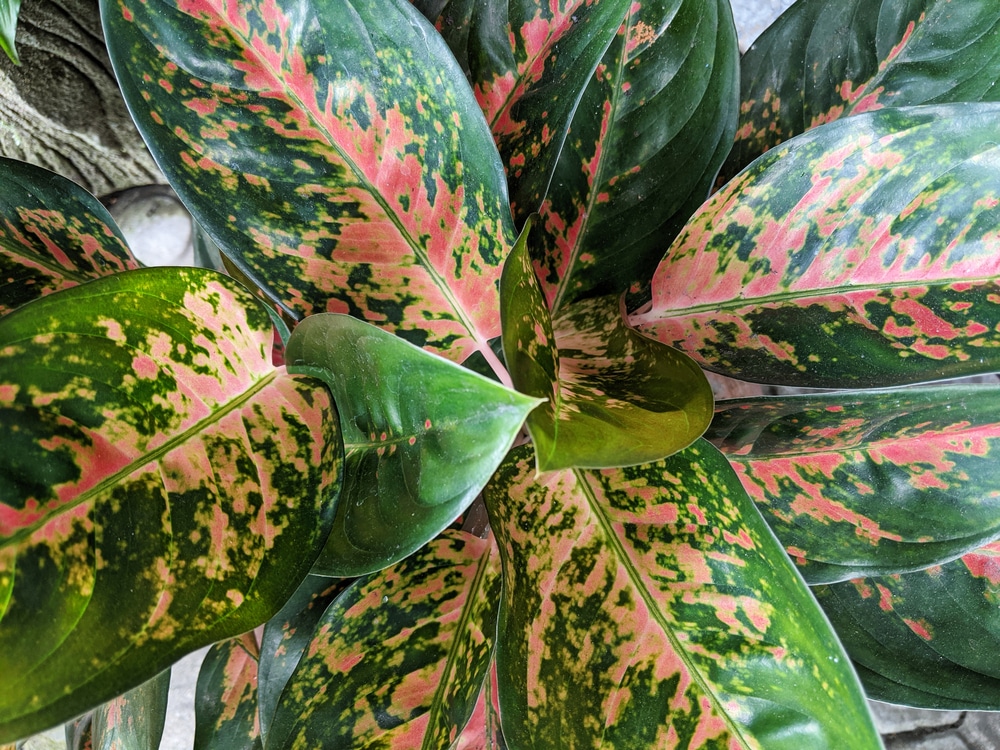The aglaonema, more commonly known as the Chinese Evergreen, hails from the rainforests and swampy regions of Southeast Asia. They are most commonly found in the Philippines and in Southern China, but they also grow in Malaysia, Thailand, and Indonesia. These hardy plants come in a variety of colors and have become quite popular around the world both for their beauty and for the low-maintenance care required for them to thrive.
Today we’re going to take a look at some Chinese Evergreen variants so that you get a taste of the aesthetics that they bring to the table and perhaps select one yourself and bring a little bit of the tropics into your own home.
Our Favorite Aglaonema Varieties
Here of a few of our favorite Aglaonema varieties that you should consider for your home:
Anyamanee
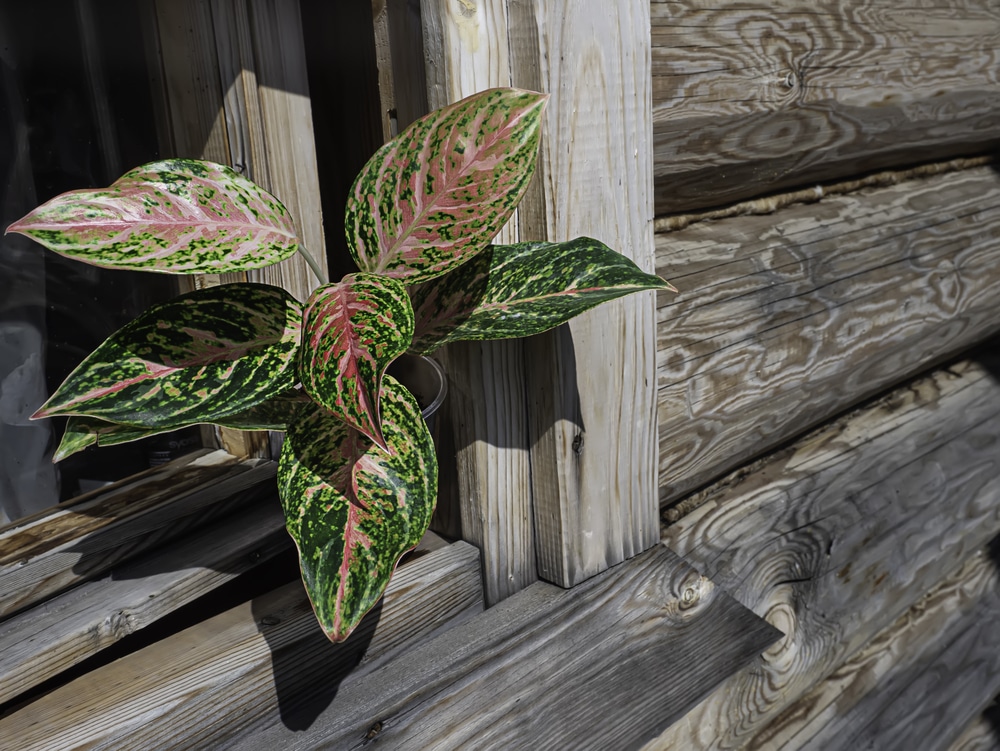
Does anyone out there like spots? The Anyamanee has got you covered! This Chinese Evergreen variant has wide, spotted leaves of dark green, with a heavy concentration of either pink or a deep, vibrant red. The pink or the red will make up most of the leaves as it matures but you’ll still have flecks and spots of green which are sure to delight!
Black Lance
The Black Lance is a Chinese Evergreen variety with long, thin leaves of a medium-green color, which bear a central silver-colored ornamentation along the center of each leaf. These Aglaonema grow to look almost ‘spiky’ as far as overall configuration and they are a bit coarse to the touch. A fine addition to add a little ‘green fierceness’ to a corner of your home that could use a little nature.
Brilliant
Considered an excellent air purifier, the Aglaonema Brilliant is a Chinese Evergreen variety with long, wide leaves which are dark green in color and sport a creamy – white to silverish midrib pattern that really catches the eyes. Silver dotting is also present along the leaves and the waxy shine of the large leaves really gives the Brilliant an elegant appearance in the home.
Burmese Evergreen
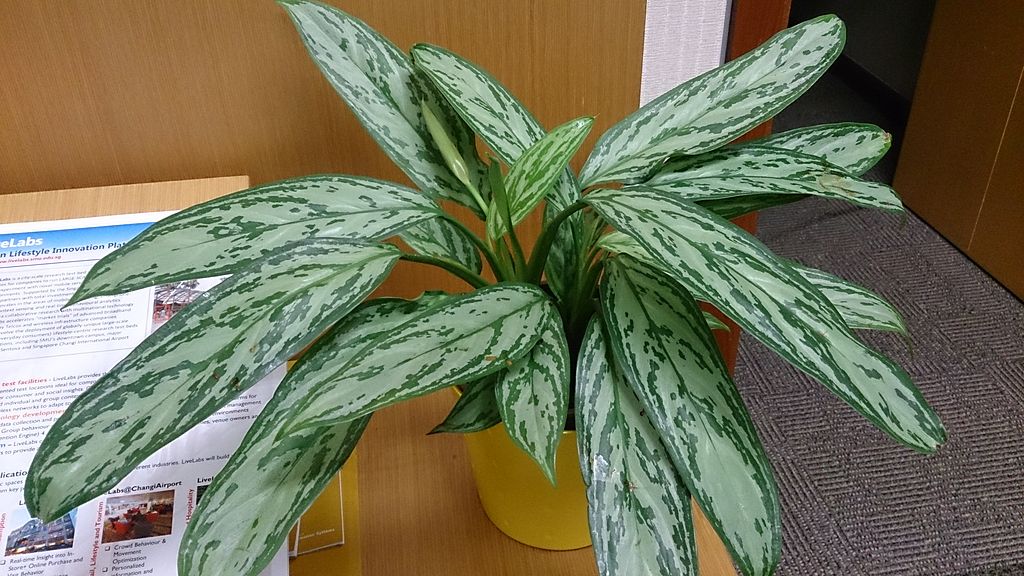
The Burmese Evergreen has long leaves of a medium width which are a light green with a creamy-white midriff clearly displayed in the lower half, while the upper have is mostly cream bordered with green. This Aglaonema actually does quite well even in low light, making is a great plant for your desk, a bookshelf, or another area that you’d like to ‘green-up’ that won’t be getting as much sunlight.
Chinese Evergreen
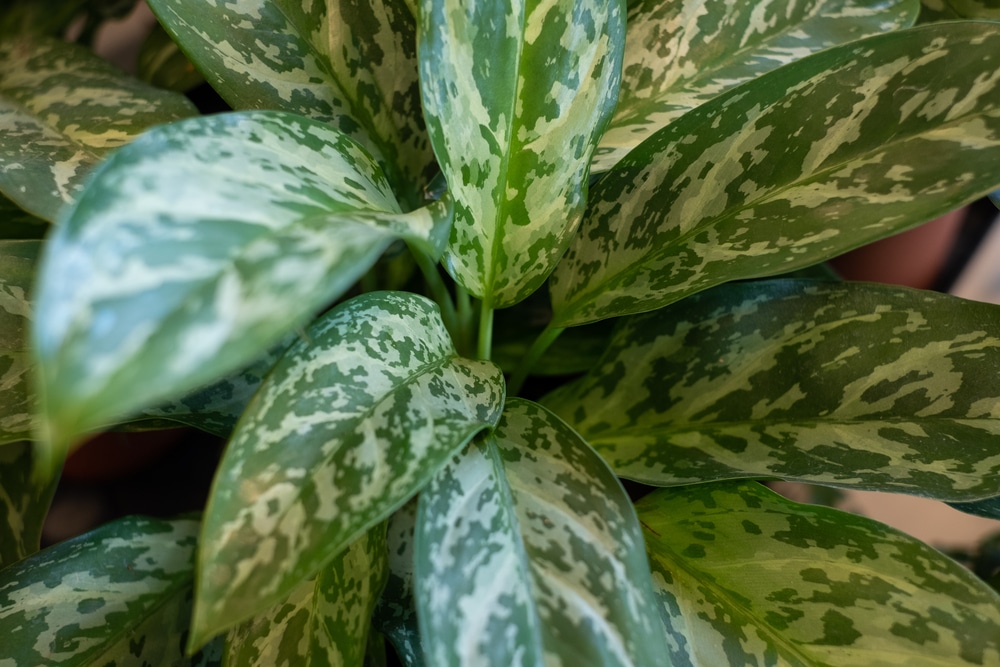
Your standard variety Chinese Evergreen is quite lovely and was ranked by Nasa as one of the top plants for purifying the air. Chinese Evergreens sport a light to medium green leaves with some white striping as well as some lovely, light green stems. Just goes to show that you don’t have to get fancy to have a beautiful aglaonema in your home!
Chocolate Aglaonema
Chocolate Aglaonemas are stunning and they’ll thrive with minimal care. They achieve their signature ‘rich chocolate’ look by the means of their long, dark green leaves which have pink or dark red veining along the underside that really pops! If you want an Aglaonema that will get a lot of attention in the home, Chocolate is one of the top favorite varieties.
Commutatum
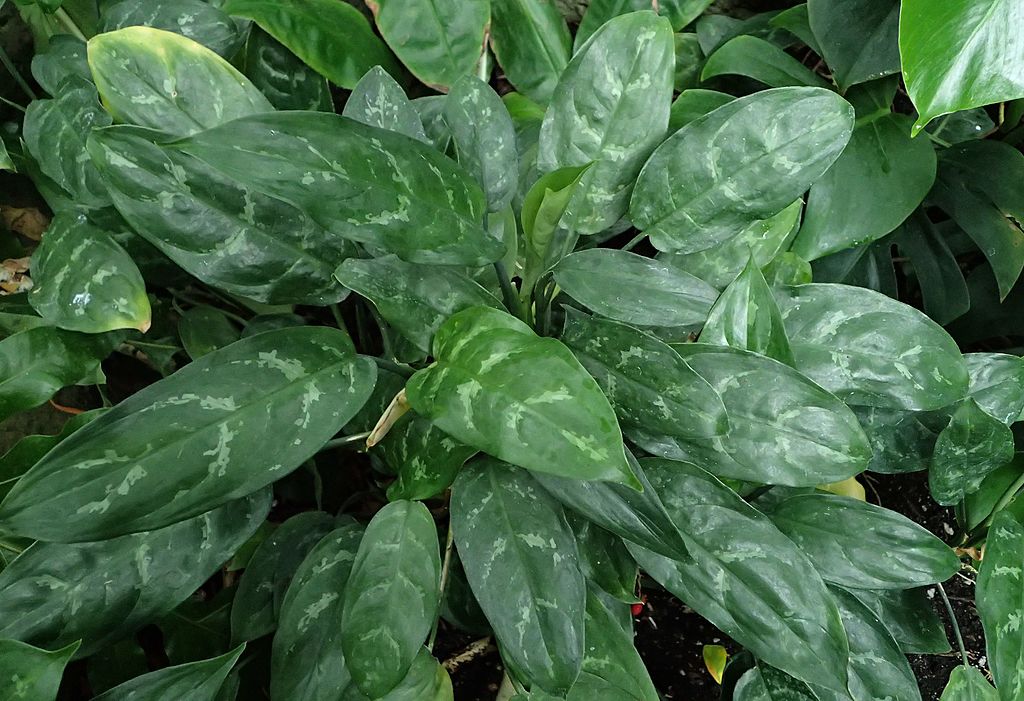
Similar to the dieffenbachia or ‘dumb cane’, the Commutatum is a Chinese Evergreen variant which can reach up to 2 feet in height and which has nice clusters of long, medium-width leaves which are a medium-green with a silvery-white center to the top of the leaves. While they produce white flowers and red berries in the wild, this will seldom occur when growing the Commutatum at home.
Cory
The Cory is a Chinese Evergreen variety which has white to cream-colored stems and long, broad leaves of medium to dark green with silver atop them in lovely feather patterns. The feather patterns and the overall sheen of leaves make this an elegant addition to your office, kitchen table, or another prominent spot where you can look at it every day.
Cutlass
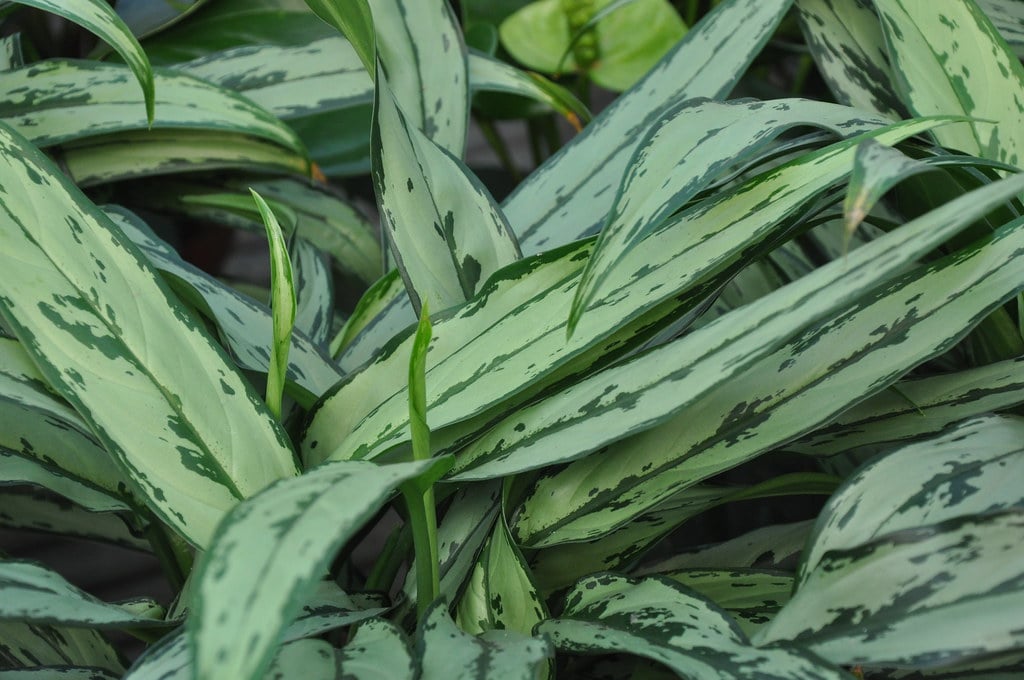
If you like a bit more of a ‘wild’ look in your Aglaonema plants, the Cutlass is a Chinese Evergreen variety that really delivers. The Cutlass has long, thin leaves which are a mix of silver and green and which are tightly packed together so that they ‘spray’ out wildly in all directions. This gives the Cutlass a bit of a ‘rock and roll’ look to it that you are sure to enjoy.
Deborah
The Deborah Aglaonema is a pretty choice and it boasts medium-sized leaves which have a fine silver center, heavily flanked with a dark green on the sides. Leaves will be a mix of vibrant and more grayed-green depending on their level of maturity.
Diamond Bay
The Diamond Bay is a definitely a looker. This Chinese Evergreen variant has rich, dark green leaves of medium to long length and a medium width which have thick, white bands through their center. It’s a handsome Aglaonema and would be great on the kitchen table where you can enjoy it daily with your morning coffee.
Emerald Bay
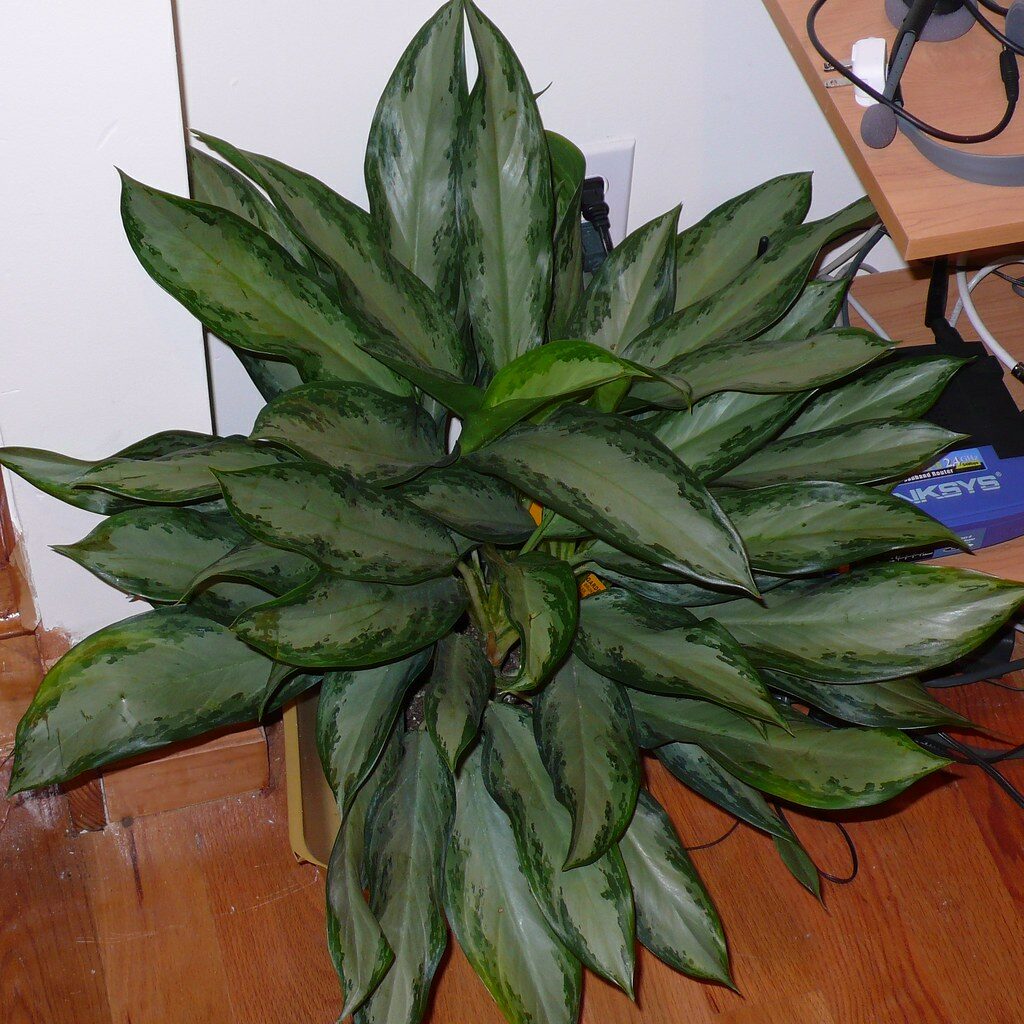
The bushy Emerald Bay is quite a bit broader than some of our previous Chinese Evergreen entries and this Aglaonema has long, medium width leaves which are dark green and largely silver in the center. This Aglaonema produces a lot of leaves, giving it that ‘bushy’ look and it would make a beautiful centerpiece with a little color flanking around it.
Emerald Beauty
True to it’s name, the Emerald beauty sports rich, dark green leaves which combine with a cream-to-silver midrib patterning on it’s short, wide leaves to give you a lovely splash of emerald color. It has quite the lush appearance to it and will definitely add a little tropic flavor wherever you decide to put it.
Emerald Star
The fast-maturing Emerald Star is quite striking, being a Chinese Evergreen with long, medium-width leaves of dark green and white speckles throughout that really draw the eye. The tips of these leaves taper into an appreciable point and thinness that gives this Aglaonema quite the distinctive look.
Etta Rose
The Etta Rose Aglaonema is another beautiful Chinese Evergreen variant which has medium-green leaves which are heavily ‘freckled’ with white to pink spots. How much pink you will get is up to you, as this color is encouraged by keeping your Etta in medium to low light, rather than in bright, indirect sunlight.
Favonian
Now, if you REALLY like pink, then you should consider adding a Favonian Aglaonema to your home. This Chinese Evergreen variant produces wide, medium-length leaves which are a dark green with a heavy concentration of hot pink thrown in that will blow your mind. It’s a beautiful plant and like all Aglaonema plants, it’s a cinch to take care of.
Georgi’s Ruby
Another great looking variant is the Georgi’s Ruby, which combines medium and dark shades of green with pink or even chartreuse hues, and the configurations are quite interesting. Usually you see green edges with a central color, but with Georgi’s Ruby it’s the other way around and the reddish-pink bordering is a sight to behold!
Golden Fluorite
The colorful Golden Fluorite has long, broad leaves which have light, medium, and dark green in the leaves, and even the occasional yellows. Combine this with some heavy doses of pink on this plant and you have a veritable color feast that you will really enjoy in your home.
Golden Madonna
The Golden Madonna is a Chinese Evergreen variant with dark green leaves, combined with a golden midrib patterning and some occasional variance at the leaf tips. Some leaves will be uniform, while others might have a bit of curve at the tips, and combined with the vibrant color this plant really achieves quite the regal look. Be sure to put yours where your guests can see it, as it’s quite beautiful and will add a little serenity to any room.
Green Papaya
With a mix of dark and lime green along with light grapefruit-pink stems, the Green Papaya is quite the vibrant addition to any room in the house. Aside from the color, the leaves themselves are lush and long and of medium width and the tips taper into thin, extended points. It’s definitely got an exotic flavor to it and we have to say that we love the Green Papaya!
Harlequin
The Harlequin gives a taste of the exotic to your home with by means of a lovely little magic trick. Depending on the light, your Harlequin will change color! While shaded, the leaves will be green with splotches of yellow in various spots which are complimented nicely by pink veins. Add a little light, and your Harlequin’s leaves change to a delightful mix of pinks and yellows!
Lady Valentine

If you love pink, the Lady Valentine is the Chinese Evergreen variant for you. Unlike many other Aglaonemas that have pink on them, Lady Valentines have MOSTLY pink leaves, with any green that you see looking like more of an ‘afterthought’. The color is quite vibrant so pink-lovers will definitely fall in love with the Lady Valentine.
Maria
With it’s long, medium-width leaves a mix of dark and medium green hues which are splashed with silvery white, the Maria is another Aglaonema that will get a lot of attention. This is because along with the color, you have an appreciable density with the number of leaves that adds a little bit of a ‘jungle’ feel wherever you decide to place it in the house.
Maria Christina
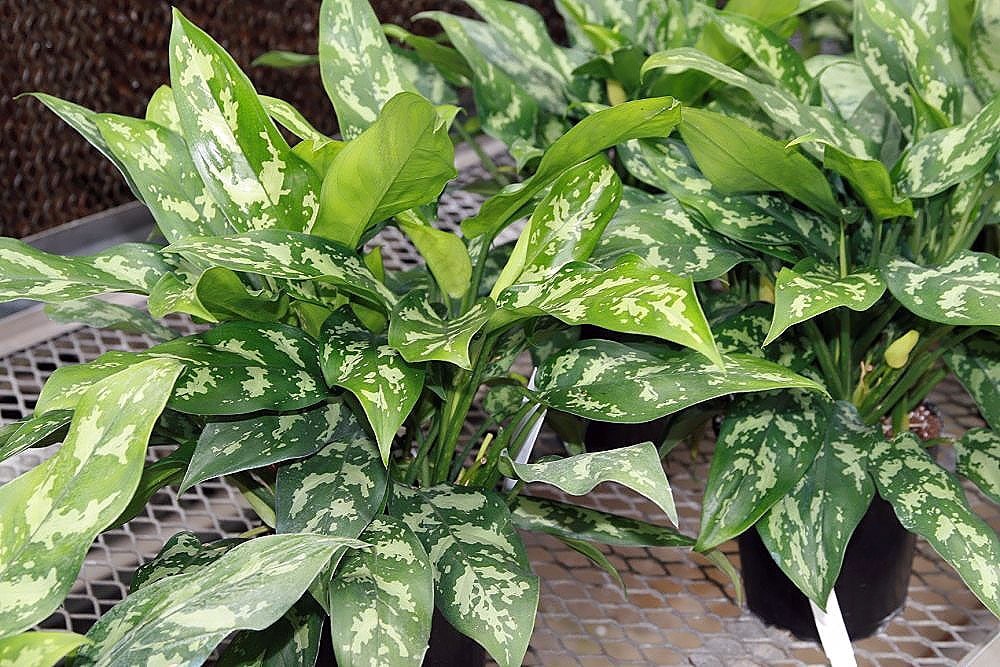
The Maria Christina is a popular Chinese Evergreen variant which has a light, delicate green to the leaves along with a heavy white midrib pattern that gives the small, medium-width leaves a delicate and dainty look to them. This plant definitely adds a little class wherever it’s placed.
Pictum Tricolor
Have you ever seen a camouflage plant? The Pictum Tricolor is nothing short of stunning and you’ve really got to see it to believe it. A native of Sumatra, this Aglaonema has the fairly standard aglaonema combination of dark and light green with a bit of white, but the arrangement makes it look like military camouflage clothing. Just keep an eye on it, because your guests will want to touch it to see if it’s real!
Pink Dalmatian
The Pink Dalmatian doesn’t quite have the leaf density of some of the other Aglaonemas we’ve listed. What it DOES have, however, is large and beautiful dark-green leaves which have a healthy splash of hot to daker pink that looks as if it was splashed on the plant with a paintbrush. If you like your plants to be less ‘bushy’ then the Pink Dalmatian is a great example of ‘less is more’.
Pink Moon
The Pink Moon is an Aglaonema which has long, medium width leaves which are dark green, with some delicate white ribbing, along with pink stems and tiny dots and dabs of pink and white. The little touches of color contrast that strong, dark green quite nicely, giving you a little color without being overly showy about it.
Red Gold
The Red Gold Aglaonema is an exquisite mix of rich res, pinks, greens, and golds. The leaves themselves are long and medium width, with red edging and reddish pink stems while the central leaf sports feathering patterns of gold and green. This is definitely a Chinese Evergreen variant that you’ll want to see daily, so be sure to find it a nice spot on your desk or in the bedroom!
Red Peacock
This aglaonema is called the Red Peacock and it has medium-length and width leaves which are dark green and have streaking lines of pink to go with its lovely pink stems. Thought tightly clustered, the leaves never manage to look ‘bushy’, but rather quite elegant as they jut out and expand the Peacocks overall width. This aglaonema would make a lovely centerpiece.
Rotundum
The Rotundum has some appreciable large, broad leaves which are a medium to dark green color and have delicate, but visible feathering patterns of white. The large leaves are a treat to look upon and the white feathering looks as if some patient artist took the time to paint them on for you.
Siam Aurora
A striking variant that you can find with a bit of online or local searching is the Siam Aurora. This particular cultivar has reddish-pink with green and sometimes a bit of yellow-green in the centers. This plant likes to grow up, rather than out, and the small space that it takes up makes it a good choice for adding a little of nature’s ornamentation to your home office workspace.
Silver King
The Silver King has long, light green leaves of medium length that spike out in all directions and bear a lovely whitish-silver coloration atop them. Aside from it’s good looks, this hearty aglaonema doesn’t need a lot of light to be happy – so you’ve got a lot of options as to where you can put it in the house.
Silver Queen
With larger leaves and shorter stems than the King, the Silver Queen does indeed look quite regal. The leaves vary from medium to large length and have a medium width to them, with a heavy concentration of silver flanked with loving ribbings of green. This aglaonema adds a definite touch of class, wherever you decide to place it.
Spring Snow
Here we have the Spring Snow aglaonema and it’s a sight to behold. The long, dark green leaves have a medium width and taper nicely at the tips, which their décor or dots and splashes of white can’t help but catch the eye. If you like your plants to be in-between ‘bushy’ and lightly-leaved, Spring Snow hits a nice middle-ground and looks amazing in the process.
Tigress
More on the bushy side, the Tigress has long, thin leaves of dark green with a vibrant ‘striped’ midrib patterns of white. The vibrant color of this aglaonema along with waxy sheen are definitely a bit of jungle chic that you’re sure to love.
White Rain
Growing tall rather than wide, the White Rain Chinese Evergreen is has long, slim leaves of light to medium green with creamy white stems in the bargain. As it doesn’t get ‘bushy’ on you, it makes a great addition in a kitchen corner, desk, a bookshelf, or any other little nook that could use a bit of delicious greenery.
Wishes
Our final bit of fantasy foliage is the Wishes aglaonema and it’s a definite work of art. With mostly pink leaves, framed in a thing edging of green and dotted with occasional green speckles, the Wishes evergreen will grab and hold the attention of just about anyone who beholds it. This vibrant color comes with a bonus of being super low-maintenance like all of the wonderful aglaonemas on our list, so if you want a bit of color in your home then you could certainly do a lot worse!
Caring for your Aglaonema
While there are anywhere from 21 to 24 different Aglaonema species and 100s of varieties, care for your own aglaonema plants is going to be fairly uniform across the board. We’ll mention any special care variations as we describe each of the types that we will tell you about today, but aside from these special considerations you can find the optimal growing instructions below.
Soil
While Cactus soil will work in a pinch, you’ll get the best results potting your Aglaonema in standard potting soil mixed with perlite for optimal drainage. If you have it, add a small amount of orchid bark as well and then your soil will be close to perfect.
Sunlight and temperature
Your Aglaonema will do best in bright, indirect sunlight, but many aglaonema will still grow in lower light, just at a much slower rate.
Watering frequency
Aglaonemas are very forgiving when it comes to their watering, as they are fairly low-maintenance to begin with. The watering frequency will generally be once every 7 – 9 days during the warmer months and once every 2 -3 weeks in winter. As a general rule, check the top 2 inches of soil and if it is dry, then go ahead and water your Aglaonema.
Quick Tips
1. Keep your Aglaonema away from vents in the house. These are tropical plants and so blasts of cold air directly on them is not good for their health. Temperatures between 65 and 75 degrees are going to be optimal.
2. Once a week you’ll want to be sure to wipe down the leaves with a soft, moist cloth.
3. Fertilizing your aglaonema twice a month from spring to fall with a water-soluble fertilizer will help to keep plant happy and healthy.
4. Repotting should be done every 12 – 18 months for smaller plants and every 18 – 24 months for larger ones. Do this during the spring, when your aglaonemas will be in a growth cycle and thus at their strongest.
Conclusion
Today we’ve taken a look at a number of aglaonema varieties but believe it or not, we’ve only skimmed the surface. The tropical and subtropical beauties actually come in hundreds of varieties, so the next time that you visit your local nursery be sure to look for them – you can really find some amazing aglaonema with very little effort.
We hope that you’ve enjoyed getting a taste of the tropics and if you’ve seen an aglaonema that has caught your eye then be sure to get one of your own.
With the minimal care required and the beauty that it will bring to the house we can guarantee that you won’t regret it!
